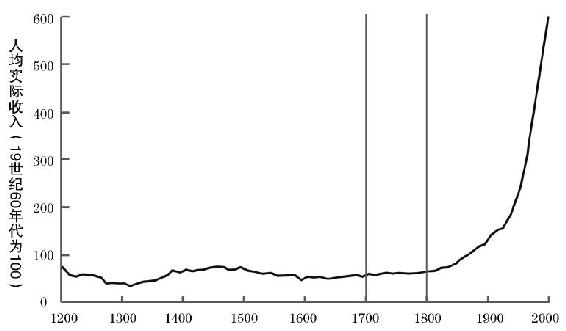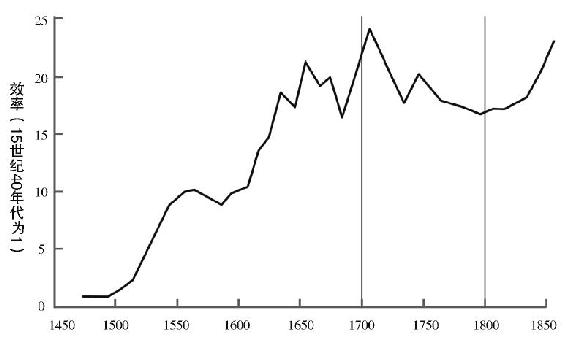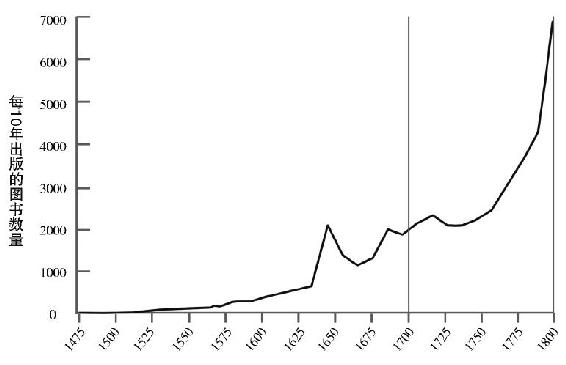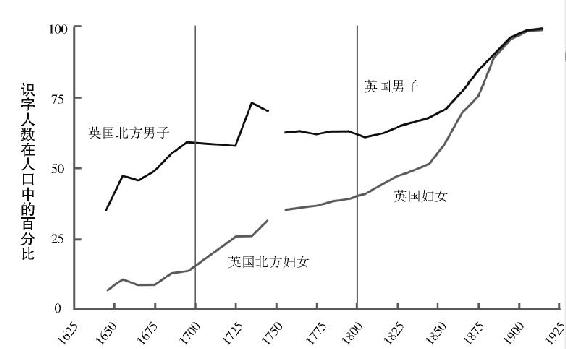(8) 人道主义革命源自何方? Whence the Humanitarian Revolution? | 人性中的善良天使
1 / 11
One example of this mysterious, unsought progress is the long-term trend away from using force to punish debtors, which most people never realized was a trend. Another is the way that political murder had faded in English-speaking countries well before the principles of democracy had been articulated. In cases like these a nebulous shift in sensibilities may have been a prerequisite to consciously designed reforms. It's hard to imagine how a stable democracy can be implemented until competing factions give up the idea that murder is a good way to allocate power. The recent failure of democracy to take hold in many African and Islamic states is a reminder that a change in the norms surrounding violence has to precede a change in the nuts and bolts of governance.
查看中文翻译
We have seen that in the span of just over a century, cruel practices that had been a part of civilization for millennia were suddenly abolished. The killing of witches, the torture of prisoners, the persecution of heretics, the execution of nonconformists, and the enslavement of foreigners -- all carried out with stomach-turning cruelty -- quickly passed from the unexceptionable to the unthinkable. Payne remarks on how difficult it is to explain these changes:
查看中文翻译
The routes whereby uses of force are abandoned are often quite unexpected, even mysterious -- so mysterious that one is sometimes tempted to allude to a higher power at work. Time and again one encounters violent practices so rooted and so self-reinforcing that it seems almost magical that they were overcome. One is reduced to pointing to "History" to explain how this immensely beneficial policy -- a reduction in the use of force -- has been gradually imposed on a human race that has neither consciously sought it nor agreed with it.
查看中文翻译
(8) 人道主义革命源自何方? Whence the Humanitarian Revolution? | 人性中的善良天使
2 / 11
Still, a gradual shift in sensibilities is often incapable of changing actual practices until the change is implemented by the stroke of a pen. The slave trade, for example, was abolished as a result of moral agitation that persuaded men in power to pass laws and back them up with guns and ships. Blood sports, public hangings, cruel punishments, and debtors' prisons were also shut down by acts of legislators who had been influenced by moral agitators and the public debates they began.
查看中文翻译
In explaining the Humanitarian Revolution, then, we don't have to decide between unspoken norms and explicit moral argumentation. Each affects the other. As sensibilities change, thinkers who question a practice are more likely to materialize, and their arguments are more likely to get a hearing and then catch on. The arguments may not only persuade the people who wield the levers of power but infiltrate the culture's sensibilities by finding their way into barroom and dinner-table debates where they may shift the consensus one mind at a time. And when a practice has vanished from everyday experience because it was outlawed from the top down, it may fall off the menu of live options in people's imaginations. Just as today smoking in offices and classrooms has passed from commonplace to prohibited to unthinkable, practices like slavery and public hangings, when enough time passed that no one alive could remember them, became so unimaginable that they were no longer brought up for debate.
查看中文翻译
(8) 人道主义革命源自何方? Whence the Humanitarian Revolution? | 人性中的善良天使
3 / 11
We won't be equipped to answer this question until we plunge into the psychology of sadism in chapter 8 and empathy in chapter 9. But for now we can look at some historical changes that militated against the indulgence of cruelty. As always, the challenge is to find an exogenous change that precedes the change in sensibilities and behavior so we can avoid the circularity of saying that people stopped doing cruel things because they got less cruel. What changed in people's environment that could have set off the Humanitarian Revolution?
查看中文翻译
The most sweeping change in everyday sensibilities left by the Humanitarian Revolution is the reaction to suffering in other living things. People today are far from morally immaculate. They may covet nice objects, fantasize about sex with inappropriate partners, or want to kill someone who has humiliated them in public. But other sinful desires no longer occur to people in the first place. Most people today have no desire to watch a cat burn to death, let alone a man or a woman. In that regard we are different from our ancestors of a few centuries ago, who approved, carried out, and even savored the infliction of unspeakable agony on other living beings. What were these people feeling? And why don't we feel it today?
查看中文翻译
(8) 人道主义革命源自何方? Whence the Humanitarian Revolution? | 人性中的善良天使
4 / 11
The Civilizing Process is one candidate. Recall that Elias suggested that during the transition to modernity people not only exercised more self-control but also cultivated their sense of empathy. They did so not as an exercise in moral improvement but to hone their ability to get inside the heads of bureaucrats and merchants and prosper in a society that increasingly depended on networks of exchange rather than farming and plunder. Certainly the taste for cruelty clashes with the values of a cooperative society: it must be harder to work with your neighbors if you think they might enjoy seeing you disemboweled. And the reduction in personal violence brought about by the Civilizing Process may have lessened the demand for harsh punishments, just as today demands to "get tough on crime" rise and fall with the crime rate.
查看中文翻译
Lynn Hunt, the historian of human rights, points to another knock-on effect of the Civilizing Process: the refinements in hygiene and manners, such as eating with utensils, having sex in private, and trying to keep one's effluvia out of view and off one's clothing. The enhanced decorum, she suggests, contributed to the sense that people are autonomous -- that they own their bodies, which have an inherent integrity and are not a possession of society. Bodily integrity was increasingly seen as worthy of respect, as something that may not be breached at the expense of the person for the benefit of society.
查看中文翻译
(8) 人道主义革命源自何方? Whence the Humanitarian Revolution? | 人性中的善良天使
5 / 11
My own sensibilities tend toward the concrete, and I suspect there is a simpler hypothesis about the effect of cleanliness on moral sensibilities: people got less repulsive. Humans have a revulsion to filth and bodily secretions, and just as people today may avoid a homeless person who reeks of feces and urine, people in earlier centuries may have been more callous to their neighbors because those neighbors were more disgusting. Worse, people easily slip from visceral disgust to moralistic disgust and treat unsanitary things as contemptibly defiled and sordid. Scholars of 20th-century atrocities have wondered how brutality can spring up so easily when one group achieves domination over another. The philosopher Jonathan Glover has pointed to a downward spiral of dehumanization. People force a despised minority to live in squalor, which makes them seem animalistic and subhuman, which encourages the dominant group to mistreat them further, which degrades them still further, removing any remaining tug on the oppressors' conscience. Perhaps this spiral of dehumanization runs the movie of the Civilizing Process backwards. It reverses the historical sweep toward greater cleanliness and dignity that led, over the centuries, to greater respect for people's well-being.
查看中文翻译
(8) 人道主义革命源自何方? Whence the Humanitarian Revolution? | 人性中的善良天使
6 / 11
An alternative explanation is that people become more compassionate as their own lives improve. Payne speculates that "when people grow richer, so that they are better fed, healthier, and more comfortable, they come to value their own lives, and the lives of others, more highly." The hypothesis that life used to be cheap but has become dearer loosely fits within the broad sweep of history. Over the millennia the world has moved away from barbaric practices like human sacrifice and sadistic executions, and over the millennia people have been living longer and in greater comfort. Countries that were at the leading edge of the abolition of cruelty, such as 17th-century England and Holland, were also among the more affluent countries of their time. And today it is in the poorer corners of the world that we continue to find backwaters with slavery, superstitious killing, and other barbaric customs.
查看中文翻译
Unfortunately the Civilizing Process and the Humanitarian Revolution don't line up in time in a way that would suggest that one caused the other. The rise of government and commerce and the plummeting of homicide that propelled the Civilizing Process had been under way for several centuries without anyone much caring about the barbarity of punishments, the power of kings, or the violent suppression of heresy. Indeed as states became more powerful, they also got crueler. The use of torture to extract confessions (rather than to punish), for example, was reintroduced in the Middle Ages when many states revived Roman law. Something else must have accelerated humanitarian sentiments in the 17th and 18th centuries.
查看中文翻译
(8) 人道主义革命源自何方? Whence the Humanitarian Revolution? | 人性中的善良天使
7 / 11
Affluence began its liftoff only with the advent of the Industrial Revolution in the 19th century. Before 1800 the mathematics of Malthus prevailed: any advance in producing food only bred more mouths to feed, leaving the population as poor as before. This was true not only in England but all over the world. Between 1200 and 1800 measures of economic well-being, such as income, calories per capita, protein per capita, and number of surviving children per woman, showed no upward trend in any European country. Indeed, they were barely above the levels of hunter-gatherer societies. Only when the Industrial Revolution introduced more efficient manufacturing techniques and built an infrastructure of canals and railroads did European economies start to shoot upward and the populace become more affluent. Yet the humanitarian changes we are trying to explain began in the 17th century and were concentrated in the 18th.
查看中文翻译
But the life-was-cheap hypothesis also has some problems. Many of the more affluent states of their day, such as the Roman Empire, were hotbeds of sadism, and today harsh punishments like amputations and stonings may be found among the wealthy oil-exporting nations of the Middle East. A bigger problem is that the timing is off. The history of affluence in the modern West is depicted in figure 4-7, in which the economic historian Gregory Clark plots real income per person (calibrated in terms of how much money would be needed to buy a fixed amount of food) in England from 1200 to 2000.
查看中文翻译
(8) 人道主义革命源自何方? Whence the Humanitarian Revolution? | 人性中的善良天使
8 / 11
FIGURE 4-7: Real income per person in England, 1200-2000
查看中文翻译
Source: Graph from Clark, 2007a, p. 195.
查看中文翻译

Even if we could show that affluence correlated with humanitarian sensibilities, it would be hard to pinpoint the reasons. Money does not just fill the belly and put a roof over one's head; it also buys better governments, higher rates of literacy, greater mobility, and other goods. Also, it's not completely obvious that poverty and misery should lead people to enjoy torturing others. One could just as easily make the opposite prediction: if you have firsthand experience of pain and deprivation, you should be unwilling to inflict them on others, whereas if you have lived a cushy life, the suffering of others is less real to you. I will return to the life-was-cheap hypothesis in the final chapter, but for now we must seek other candidates for an exogenous change that made people more compassionate.
查看中文翻译
One technology that did show a precocious increase in productivity before the Industrial Revolution was book production. Before Gutenberg's invention of the printing press in 1452, every copy of a book had to be written out by hand. Not only was the process time-consuming -- it took thirty-seven persondays to produce the equivalent of a 250-page book -- but it was inefficient in materials and energy. Handwriting is harder to read than type is, and so handwritten books had to be larger, using up more paper and making the book more expensive to bind, store, and ship. In the two centuries after Gutenberg, publishing became a high-tech venture, and productivity in printing and papermaking grew more than twentyfold (figure 4-8), faster than the growth rate of the entire British economy during the Industrial Revolution.
查看中文翻译
(8) 人道主义革命源自何方? Whence the Humanitarian Revolution? | 人性中的善良天使
9 / 11
FIGURE 4-8: Efficiency in book production in England, 1470-1860s
查看中文翻译

Source: Graph from Clark, 2007a, p. 253.
查看中文翻译
FIGURE 4-9: Number of books in English published per decade, 1475-1800
查看中文翻译
The newly efficient publishing technology set off an explosion in book publication. Figure 4-9 shows that the number of books published per year rose significantly in the 17th century and shot up toward the end of the 18th.
查看中文翻译
Sources: Simons, 2001; graph adapted from http://en. wikipedia. org/wiki/File1477-1799_ESTC_titles_per_decade,_statistics. png:.
查看中文翻译
The books, moreover, were not just playthings for aristocrats and intellectuals. As the literary scholar Suzanne Keen notes, "By the late 18th century, circulating libraries had become widespread in London and provincial towns, and most of what they offered for rent was novels." With more numerous and cheaper books available, people had a greater incentive to read. It's not easy to estimate the level of literacy in periods before the advent of universal schooling and standardized testing, but historians have used clever proxy measures such as the proportion of people who could sign their marriage registers or court declarations. Figure 4-10 presents a pair of time series from Clark which suggest that during the 17th century in England, rates of literacy doubled, and that by the end of the century a majority of Englishmen had learned to read and write.
查看中文翻译

(8) 人道主义革命源自何方? Whence the Humanitarian Revolution? | 人性中的善良天使
10 / 11
Literacy was increasing in other parts of Western Europe at the same time. By the late 18th century a majority of French citizens had become literate, and though estimates of literacy don't appear for other countries until later, they suggest that by the early 19th century a majority of men were literate in Denmark, Finland, Germany, Iceland, Scotland, Sweden, and Switzerland as well. Not only were more people reading, but they were reading in different ways, a development the historian Rolf Engelsing has called the Reading Revolution. People began to read secular rather than just religious material, to read to themselves instead of in groups, and to read a wide range of topical media, such as pamphlets and periodicals, rather than rereading a few canonical texts like almanacs, devotional works, and the Bible. As the historian Robert Darnton put it, "The late eighteenth century does seem to represent a turning point, a time when more reading matter became available to a wider public, when one can see the emergence of a mass readership that would grow to giant proportions in the nineteenth century with the development of machine-made paper, steam-powered presses, linotype, and nearly universal literacy."
查看中文翻译
(8) 人道主义革命源自何方? Whence the Humanitarian Revolution? | 人性中的善良天使
11 / 11
FIGURE 4-10: Literacy rate in England, 1625-1925
查看中文翻译
Source: Graph adapted from Clark, 2007a, p. 179.
查看中文翻译
The growth of writing and literacy strikes me as the best candidate for an exogenous change that helped set off the Humanitarian Revolution. The pokey little world of village and clan, accessible through the five senses and informed by a single content provider, the church, gave way to a phantasmagoria of people, places, cultures, and ideas. And for several reasons, the expansion of people's minds could have added a dose of humanitarianism to their emotions and their beliefs.
查看中文翻译

And of course people in the 17th and 18th centuries had more to read about. The Scientific Revolution had revealed that everyday experience is a narrow slice of a vast continuum of scales from the microscopic to the astronomical, and that our own abode is a rock orbiting a star rather than the center of creation. The European exploration of the Americas, Oceania, and Africa, and the discovery of sea routes to India and Asia, had opened up new worlds and revealed the existence of exotic peoples with ways of life very different from the readers' own.
查看中文翻译